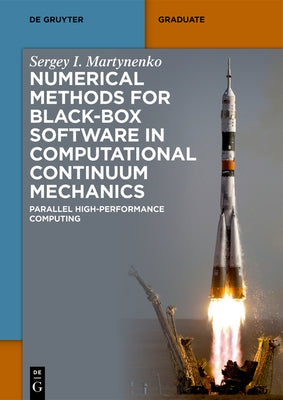Before you leave...
Take 20% off your first order
20% off
Enter the code below at checkout to get 20% off your first order
Discover summer reading lists for all ages & interests!
Find Your Next Read

The organization of the material is presented as follows:
This introductory chapter I represents a theoretical analysis of the computational algorithms for a numerical solution of the basic equations in continuum mechanics. In this chapter, the general requirements for computational grids, discretization, and iterative methods for black-box software are examined. Finally, a concept of a two-grid algorithm for (de-)coupled solving multidimensional non-linear (initial-)boundary value problems in continuum mechanics (multiphysics simulation) in complex domains is presented.
Chapter II contains descriptions of the sequential Robust Multigrid Technique which is developed as a general-purpose solver in black-box codes. This chapter presents the main components of the Robust Multigrid Technique (RMT) used in the two-grid algorithm (Chapter I) to compute the auxiliary (structured) grid correction. This includes the generation of multigrid structures, computation of index mapping, and integral evaluation. Finite volume discretization on the multigrid structures will be explained by studying a 1D linear model problem. In addition, the algorithmic complexity of RMT and black-box optimization of the problem-dependent components of RMT are analysed.
Chapter III provides a description of parallel RMT. This chapter introduces parallel RMT-based algorithms for solving the boundary value problems and initial-boundary value problems in unified manner. Section 1 presents a comparative analysis of the parallel RMT and the sequential V-cycle. Sections 2 and 3 present a geometric and an algebraic parallelism of RMT, i.e. parallelization of the smoothing iterations on the coarse and the levels. A parallel multigrid cycle will be considered in Section 4. A parallel RMT for the time-dependent problems is given in Section 5. Finally, the basic properties of parallel RMT will be summarized in Section 6.
Theoretical aspects of the used algorithms for solving multidimensional problems are discussed in Chapters IV. This chapter contains the theoretical aspects of the algorithms used for the numerical solving of the resulting system of linear algebraic equations obtained from discrete multidimensional (initial-)boundary value problems.
Sergey Martynenko is a Professor of Bauman Moscow State Technical University. He is also a corresponding member of the Russian Engineering Academy. He is specializing in mathematical modeling, numerical methods and software packages. He is also a Leading researcher at Joint Institute for High Temperatures of the Russian Academy of Sciences and Laboratory of Physical Modeling of Two-Phase Flows. Currently, he is actively working on the development of 3D mathematical models of physical and chemical processes (thermal conductivity, CFD, turbulence, thermal decomposition of hydrocarbon compounds, combustion, multiphase flows, etc.)
Thanks for subscribing!
This email has been registered!
Take 20% off your first order
Enter the code below at checkout to get 20% off your first order